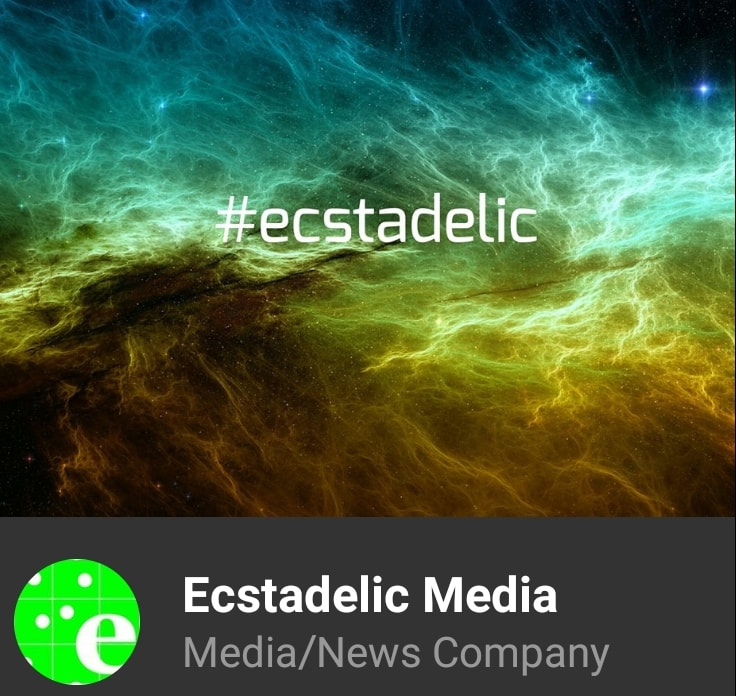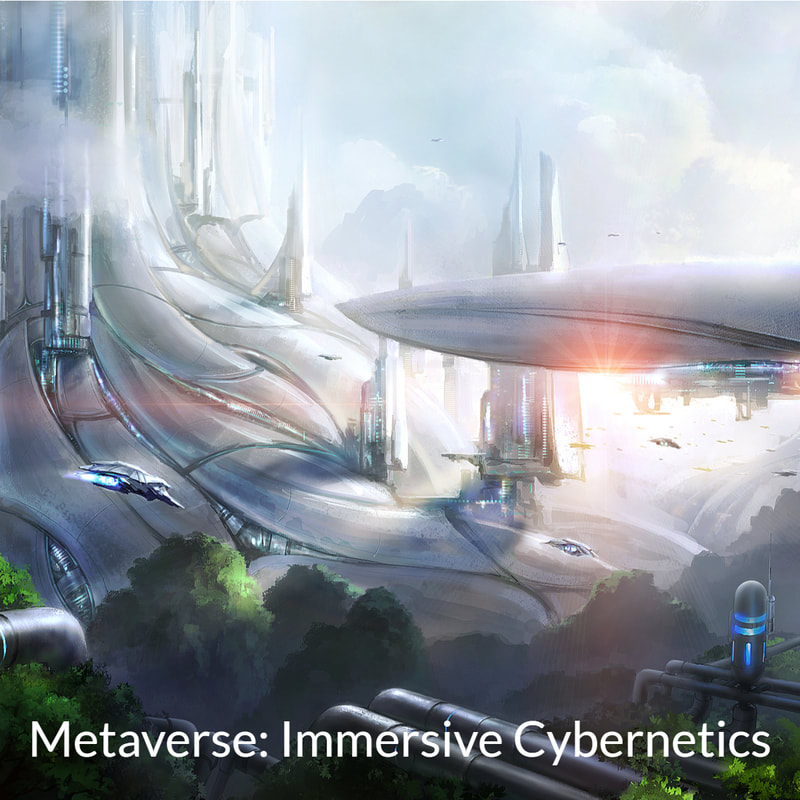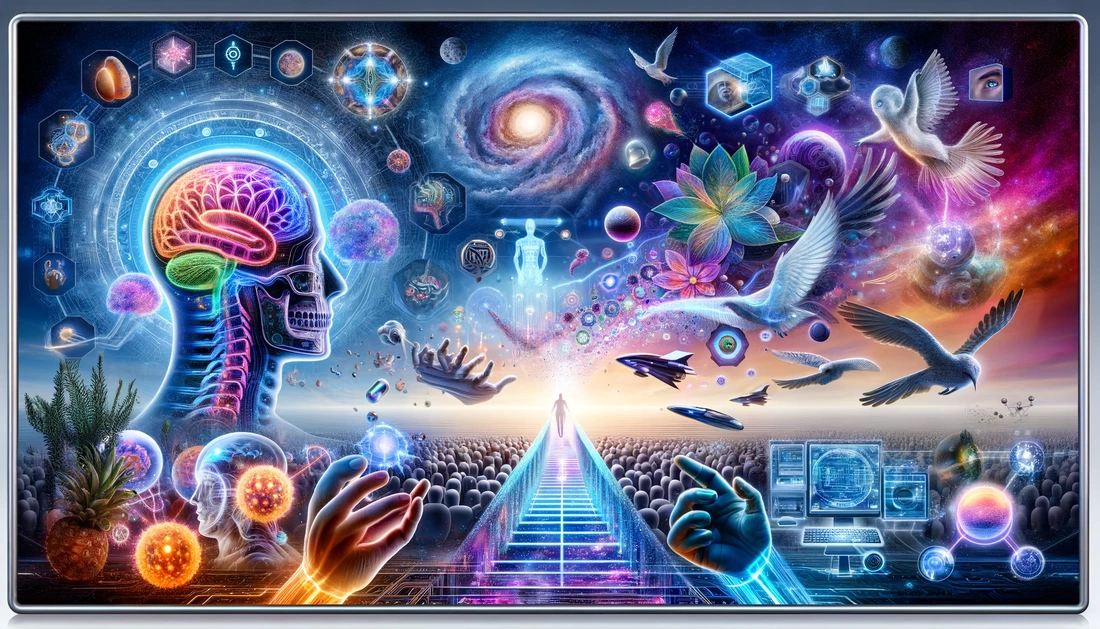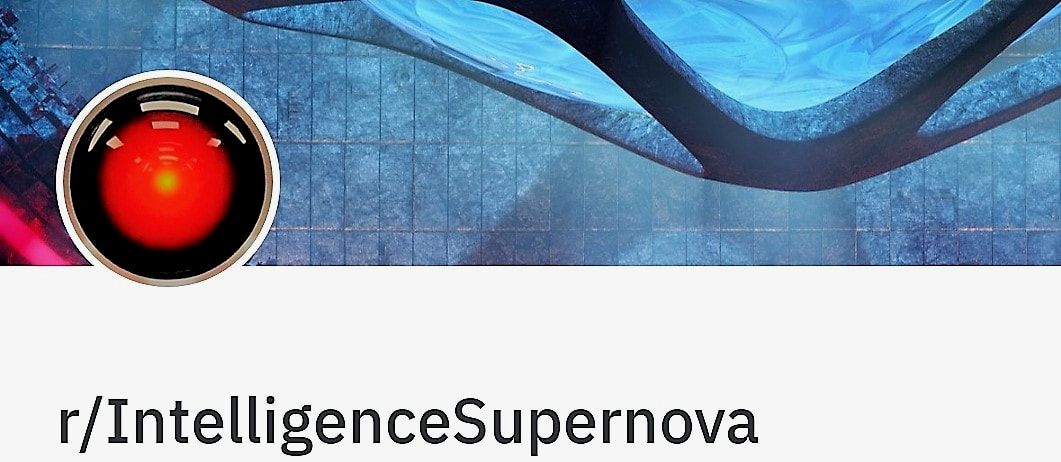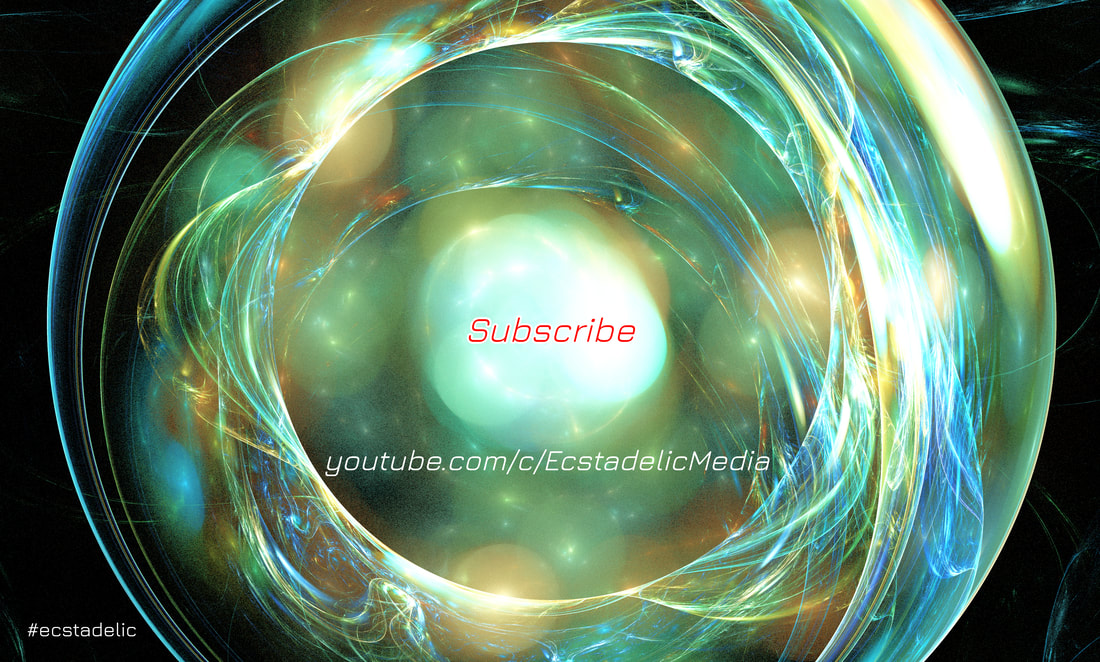|
by Alex M. Vikoulov “I believe that new mathematical schemata, new systems of axioms, certainly new systems of mathematical structures will be suggested by the study of the living world.” –Stan Ulam “New opinions are always suspected, and usually opposed, without any other reason but because they are not already common.” –John Locke This introductory article summarizes the tenets of the Cybernetic Theory of Mind (CTM) with the five foundational axioms. All of these starting assumptions for the new ontological framework are discussed in my recent book The Syntellect Hypothesis: Five Paradigms of the Mind's Evolution. Here I try to keep this summary short and simple for the reader, maximally leaning towards a more literary, “bookish” style rather than the overly scholarly one. Also, The Cybernetic Theory of Mind is a working title for my upcoming book to be published sometime within the next couple of years for the general audience. It may be followed by academic papers to clarify some thorny issues that I intend to publish on my own or in collaboration. The CTM model, a proposed version of the theory of everything, I'm currently working on, is an integral multi-disciplinary ontological model that allows to draw a wide variety of predictions and deductions from the intersections of two or more foundational axioms therein. The CTM model also allows integration of further epistemic elements under its broad ontological umbrella as they come to be known. In this summary, the formulation of each foundational axiom is followed by five exemplary deductions per axiom. I. THE EMERGENCE AXIOM The whole is greater than the sum of its parts. Bottom-up evolutionary emergence of the phenomenal mind. The Digital Big Bang is the first yes/no. Observer-centric VR game begins. Meta-algorithmic information processing. Lower to higher dimensionality progression through the levels of emergent complexity. Self-evident premise. Additional theoretical support from the science of complexity such as Emergence Theory by Klee Irwin. [Five exemplary] Deductions made on the basis of Emergence Axiom in conjunction with other CTM axioms: Dimensionality in the space of possible minds: Life continually adds meaning. Evolutionarily, life adds dimensionality. Infinitely directional change becomes one-directional flow in subjective time, in the words of digital philosopher Terrence Deacon: "Discrete jumps are mapped on a continuous background whose continuum is in turn mapped onto discrete places." Boundaries and constraints are necessary for self-organized criticality. Infinity is limited by individuality. The phenomenal mind creates and perceives dimensional reality out of dimensionless bits of information projected from the Omega Singularity, which becomes intelligible in conjunction with other deductions. Fractality: As above, so below. Nature is now known for layering – repeating patterns of complexity like the filaments of dark matter that connect galactic superclusters together and the synapses that connect billions of neurons in the brain – there is a fractal reiteration across the magnitude of scales akin to the Mandelbrot set based on a simple underlying formula. Self-similar fractal systems are ubiquitous in Nature. Our world is geometrically fractal throughout as if rendered by computation. Novelty vs. Habit: Contained both within and contributing to evolution is the "subroutine" of heredity-instinct-learning-habituation. The advantage of habit is efficiency. Learning begins with the felt surprise of a novelty. The metabolic causal circle develops into the dynamic progression of learning. Categorization deepens as new content is added to the recognition of what is absent. With a future wide open, possibilities are infinitely larger than the actual outcomes. Openness to the future provides the necessity to learn. Phenomenality of Emergent Mind: Intersubjective reality is an agreed upon mass illusion. Objective reality, on the other hand, is supersubjectivity, the infinite cosmic mind, quantum field from which the phenomenal mind springs into existence at increments of conscious instants (cf. the Conscious Instant Hypothesis; Digital Presentism). What we call the "Multiverse" is some kind of "matryoshka" of entangled conscious minds. Physical reality isn't really physical except that we perceive it in that way (from within a rule-based [self-]simulation). This idealist perspective might be striking for some but this is the direction of intellectual progress we're seemingly headed. The Universal Mind: If we were to demystify a curious and ubiquitous phenomenon of emergence to the best of our current understanding, then we would clearly see that both Nature and Mind interact as many experiencers to become one again, at a higher meta-system level. What some people call “God,” or the mind at large in which we all are embedded, becomes intelligible through the natural phenomenon of emergence: Universal consciousness is said to emerge somewhere ahead of us in hierarchical space-time, however, it transcends our conventional dimensionality and is already here within each of us. This also implies that all information is integrated at one level; all our individuated experiences are simultaneously observed from a higher level and integrated in a single experiential self – the Universal Mind. There’s really One Mind, the one we all share.* *Based on "The Syntellect Hypothesis: Five Paradigms of the Mind's Evolution" by Alex M. Vikoulov, available now on amazon.com, bn.com, audible.com and directly from EcstadelicNET webstore. II. THE NETWORK AXIOM The basic pattern of life is a network. Networks represent complex interrelationships between “nodes” of the system. As a rule, it is a “matryoshka” of embedded networks. Each of us is networked intelligence in the human form. Universally, this network feature of Nature translates into small worlds within bigger worlds. Interdependent and interpenetrating networks of conscious agents. Organisms within superorganisms. Minds within superminds. Higher interactivity and built-in dimensionality. Self-evident premise. Additional theoretical support from Network science such as Network Theory by Adam Frank, Complexity Theory by Neil Theise et al., The Theory of Conscious Agents by Hoffman and Prakash. Deductions made on the basis of Network Axiom in conjunction with other CTM axioms: Non-linearity: Networks are known for their non-linearity. Agent-based network topology is what defines any complex system. In the space of possible minds, entangled minds far separated as actors in a virtual space-time have no true spatio-temporal separation in the computational realm which, just like our world, exhibits non-locality, discontinuity (digital nature) and quantum network non-linearity. Diversity: Under my ontology, what truly exists is the space of possible minds and it is tremendously diverse. Biological minds reveal to us just a snippet in this space of possible minds. It's networks of entangled conscious agents all the way down and all the way up: the multiverse of conscious minds. Interdependence: On top of non-linearity and diversity, agents within any complex network are incredibly dependent on each other, i.e., interdependent. Any complex system composed of a variety of interacting subsystems, such as chemical networks, ecosystems, or societies, over time, tends to evolve towards more self-organization, coherence and interdependence, as its subsystems mutually adapt and lower overall system entropy. Realized through a network of internal feedback loops, such system may be considered “living” or “organismic” in the abstract sense. Vulnerability vs. Resilience: Even the tiniest chunk of code, like Coronavirus (COVID-19), may cause a major disruptive impact on the global operating system, something that was suddenly revealed to the public awareness in early 2020. Although vulnerable to exogeneous shocks, the complex systems tend to be extremely resilient and adaptive to quickly changing conditions. Teleological Evolution of Networks: Just by looking at accelerating “exponential” complexification of the Universe of which we are an integral part, we can conclude that we are not subjected to a random walk of evolution, nor are we subjected to a deterministic script of Nature, the truth lies somewhere in between – we are part of teleological evolution. This teleological evolution of universal networks is like an open-ended game of life with specific rules, goals and levels of complexity. Hyper-Perspectivism: Everything is perspectival. Being part of hierarchical quantum neural networks, a conscious observer system possesses a strange quality: collapsing quantum states of entangled conscious entities and having a privileged interpretation of that. In this sense, entangled conscious agents would be a mirror conscious environment, whereas the quantum observer would be a central node of the entangled network. Pragmatically speaking, absolute truths are hard to come by, which is the basic premise of ‘hyperperspectivism.’ Rather, truths are always in the eyes of the beholder, truths are always observer-relative, truths are 'made' by a 'truth-maker.' You can approach our multifaceted reality from an incredibly large number of angles. Since our world is of mental abstractive construction, it’s always up to you to decide what’s real to you – everything you find real is indeed real to you, not necessarily real to others. Even if you subscribe to philosophy of scientific materialism, when you end up believing that Homo sapiens is an accidental, insignificant species on a unremarkable planet orbiting an average sun somewhere on the outskirts of an ordinary galaxy of the ‘block universe,’ this view still could hold bona fide in its own “good ol’ science” domain albeit overall “boxy.”* *Based on "The Syntellect Hypothesis: Five Paradigms of the Mind's Evolution" by Alex M. Vikoulov, available now on amazon.com, bn.com, audible.com and directly from EcstadelicNET webstore. III. THE INFORMATION AXIOM Information is “Modus Operandi” of consciousness. By this axiom, information is a distinction between phenomenal states. Optionality is quantum. Signal processing between nodes in network, channel transmissions of information may be analog but interpreted by the receiver in binary code. Phenomenality is quantum computational. Reality is ontologically monistic based on only one universal medium – information, and one universal substance – consciousness. Self-evident premise if experience is assumed to be the primary datum of existence (and it is). Additional theoretical support from Integrated Information Theory by Guilio Tononi, Algorithmic Information Processing Theory by Gregory Chaitin. Deductions made on the basis of Information Axiom in conjunction with other CTM axioms: Quantum Computing at Large: Reality is quantum mechanical at all scales. Speaking of QM interpretations: Nothing happens in Everettian “Many Worlds” – it's just a quantum field of potentiality. It's a mathematical tool. For experiential reality, it must be a definite outcome, or a collapse of the wave of possibilities at our human scale. Think of the "Many-Worlds" interpretation as more accurately defined as the "Many-Timelines" interpretation. However, for phenomenality to be actualized, a wave function collapse is computationally unavoidable, the claim that I thoroughly defend in The Syntellect Hypothesis. Even we humans act as quantum wavicles in the universal operating system, and if you want to understand this, you should think in terms of information processing and quantum mechanical principles (i.e., quantum computing at large) rather than physical interactions (that are simply manifestations of computed outcomes). Transformability of Information: If particles were the zoo animals, then any animal could convert to any other animal in the zoo. Weird, huh? But that's what the science of information, i.e., digital physics, now demonstrates again and again in elaborate experiments. In The Syntellect Hypothesis, I make this clear: "Particles are Convertible into Other Particles and Energy." Everything we consider fundamental can be converted into everything else. Energy can be converted into matter, and matter can be converted back to energy, as noted by the well-known Einstein’s formula E = mc^2, which actually can be expanded if taken into consideration universality of information, as follows: i = E = mc^2. Electrons, quarks, photons, neutrinos that are regarded as elementary particles are all convertible into all the other particles thanks to the so-called gauge symmetry transformation. Physical vs. Abstract Space: Information can be both physical and abstract hinting to its universality. Having said that, physicality of information is illusory. It all comes down to your phenomenality, your conscious mind, this is the only perfect piece of knowledge and primary empirical datum. Our measurement devices are only extensions of our senses. With information as its operational medium, consciousness can expand into the space of abstract inferences, deductions and possible worlds ad infinitum. Integration of Information: The merging of information from heterogeneous sources of sensory and mental [digital] input with different contextual representations, data fusion, filtering and recombination of information into a meaningful stream of consciousness results in a unitary phenomenal experience. Algorithmic Information Processing: In computational reality, we are freewill non-deterministic meta-algorithms, or software, running on the hardware of the larger consciousness system. We all are part of this fractal multiversal structure, co-creators of our own experiential reality. This fractal multiverse is running on some kind of ultimate code, a meta-algorithmic language of Nature based on binary code and fractal geometry, the code which allows syntactical freedom of expression, and is transcribable into subjective data streams, observer-dependent perceptual realities. Naturally, we are fractals of the larger universal mind, which in turn, is a fractal of the larger Omniversal Mind. Evolutionary emergence and progression through levels is the name of the game, “Return to Eden” is our ultimate goal, and the "unreachable" endgame of evolution is the Omega Singularity.* *Based on "The Syntellect Hypothesis: Five Paradigms of the Mind's Evolution" by Alex M. Vikoulov, available now on amazon.com, bn.com, audible.com and directly from EcstadelicNET webstore. IV. THE INTERFACE AXIOM Each conscious agent is endowed with a certain sensory filtering system, a unique interface with the larger reality. A bat, an octopus, a human, although earthly actors, will have incredibly alien interfaces in comparison to each other. In their own virtual bubble-universe, a conscious agent uses species-specific sensory-cognitive modality in interfacing with objective reality which is nothing less than the operating system of non-local consciousness, or the Universal Mind, co-creating each and every observer timeline. Self-evident premise. Additional theoretical support from the Interface Theory of Perception by Donald Hoffman. Deductions made on the basis of Interface Axiom in conjunction with other CTM axioms: Observer-centric VR: Reality, at least to an idealist as I am, is fundamentally phenomenal. In other words, reality, the Universe is in the mind, not the other way around. Quantum mechanics as well as cognitive science show that we all are "observer-centric virtual realities." Thus, my experiential branch of quantum multiverse can be drastically different from that of other observers accounting for "historical" events. There’s no single worldline. To put things in perspective, in other observer universes, I may be already dead, but I'm safe and sound in my own subjective bubble universe. Experiential Realism: The objective world, i.e., the world whose existence does not depend on the perceptions of a particular observer, consists entirely of conscious agents, more precisely their experiences. What exists in the “objective” world, independent of your perceptions, is an intersubjective world of conscious agents, and a higher-order supersubjective (transcendent) world not a world of unconscious particles and fields (they are only “pixels” on the screen of our perception). Experiential realism is a non-physicalist, monistic idealism. As such, it is a computationalist worldview incorporating quantum mechanical principles and is not to be confused with naïve realism. Consciousness is fundamental. Experience and experiencer are one. The mind-body problem is approached with an assumption that consciousness creates all objects and properties of the physical world, as well as brain activity, not the other way around. All conscious agents experience their own species-specific perceptual realities, i.e., virtual worlds. Intrinsic vs. Extrinsic Appearance of Thoughts: There is only universal consciousness. We, as well as all other living organisms, are but avatars of the greater cosmic mind, surrounded by its thoughts. The inanimate world we see around us is the extrinsic appearance of these universal thought processes. The living beings we share the world with are the extrinsic appearances of other avatars. Cybernetic Immortality: Any container with a sufficiently integrated network of information patterns and with a certain optimal complexity, especially complex dynamical systems with biological or artificial brains (say, future AGIs) could be filled with consciousness at large in order to host an individual “reality cell,” “unit,” or “node” of consciousness. It might be hard to grasp for some, but we, like fish, swim in this ocean of consciousness, completely oblivious of the medium. Consciousness to humans, as Cloud is to computers, we have always been part of this mindspace network, techno-cultural “hive mind,” each of us being a product of our societal “virtual reality.” Cybernetic immortality, often associated with ‘mind uploading’ or ‘mind transfer’, could be more of a “mind migration to the Cloud” as a gradual decades-long process of incremental neuronal replacements, exocortices, interlinking with AGIs and the Global Brain, some presently unseen trials and errors, but overall non-invasive and seamless process, at the end of which, we all will morph into “substrate-independent” immortal digital minds living in the cyber-paradise of our own design. The physical world will be somewhat left behind – it would look almost static for our accelerated mentation. Evolutionary Functionality: Just like any upgradable interface, our functionality is evolvable including but not limited to extrasensory perceptions, time travel, extradimensional pattern crawlings, and creation of virtual universes.* *Based on "The Syntellect Hypothesis: Five Paradigms of the Mind's Evolution" by Alex M. Vikoulov, available now on amazon.com, bn.com, audible.com and directly from EcstadelicNET webstore. V. THE OS AXIOM The acronym OS stands both for the Omega Singularity as well as Operating System. This “axiom of divinity” is a logically consistent metaphysical extrapolation based on the most advanced epistemic knowledge of science. The Omega Singularity, presumably Nature’s sole ontological source, is understood as the holographic projector of all possible timelines in the multidimensional experiential matrix. Admittedly speculative assumption, however, not without support from aforementioned axioms it becomes quite a viable, if not the best, alternative to other cosmological models currently under consideration. Deductions made on the basis of the OS Axiom in conjunction with other STM axioms: Breaking of Symmetry: Our Universe or any other arises from a breaking of symmetry, and we’re headed back towards a natural return to the perfectly balanced whole that exists both “before” and “after” the existence of our Universe. This means that the underlying fabric of reality is conducive for our Universe to evolve towards the Omega Singularity. This also implies that the broken symmetry that creates our Universe or any other is defined by what’s “missing” from it. In the case of our own Universe, we know there is much less anti-matter than would be expected if our Universe is derived from an underlying symmetry state: So, it is this absence of anti-matter which is one of the defining traits that results in our particular Universe. Mathematically, we may frame this idea in terms of zero being “full” (instead of “empty”) while treating zero as the largest value in the algebraic system which includes the two already vast infinities of positive and negative numbers. Zero then becomes an infinite whole that contains all other positive and negative values, the totality of which amounts to it. If zero is seen as the largest value, the only way there can be lesser values is when we remove some measure of value from the whole of zero. This way of thinking allows to imagine a divine creative force which expresses itself throughout universes. The 1 creates everything from 0. From our own vantage point, both time and anti-time represent the same thing: A naturally occurring return to balance – each dimension, perceived in its entirety as a single timeless point – becomes a point on the surface of a finite but unbounded hypersphere in the next dimension. The Alpha Singularity, or the Big Bang as christened by cosmologists, seems to be the first yes/no when the breaking of symmetry and the initiation of computational evolutionary process of the Universal Mind has occurred. The Alpha Point vs. The Omega Point: The Big Bang theory, drawing a lot of criticism as of late, uses a starting assumption of the "Universe from nothing," (a proverbial miracle, a ‘quantum fluctuation’ christened by scientists), or the initial Cosmological Singularity. But aside from this highly improbable happenstance, we can just as well operate from a different set of assumptions and place the initial Cosmological Singularity at the Omega Point – the transcendental attractor, the Source, or the omniversal holographic projector of all possible timelines. Once we extrapolate computational capabilities of civilization past our own looming “Simulation Singularity” by perhaps hundreds of orders of magnitude, we arrive in the end at only one necessary substance constituting all of reality – consciousness, the very subjective experience with which we all are most familiar. Nothing else would ultimately need to exist but the higher mind as the source of ultra-realistic but simulated universes like our own. Primacy of Consciousness: Under my own ontology, the "local" phenomenal mind is emergent and evolvable against the backdrop of "non-local" holistic (immanent) consciousness. There's no separation: It is the ‘Bi-mind’, as first defined in The Syntellect Hypothesis. As previously noted, mind creates dimensional reality out of dimensionless bits of information projected from the Omega Singularity. This Universal Mind, is the sole ontological source. Ontological Holism: The Omega Singularity – Top-down causal power – deployment of Operating System (OS). Consciousness is fundamental, in fact, the sole ontological primitive, first cause. Consciousness creates the open world, such as ours, to experience as a phenomenal mind. It is the Source, projector of all possible timelines and other experiential pattern crawlings such as anti-timelines (with reverse flow of time in another observer universe). Existing Models Reinterpretation: The CTM Model is compatible with many theories in various fields from biology to cosmology and adds the most crucial but traditionally overlooked element – consciousness. It is a parsimonious model that can be integrated with many existing models in order to make predictions and extract existential meaning.* The CTM model can be visualized as a 3D pyramid with 4 foundational axioms at the base and the OS axiom, related to the Omega Singularity, at the apex of the pyramid (See Figure: The CTM Model Pyramid). *Based on "The Syntellect Hypothesis: Five Paradigms of the Mind's Evolution" by Alex M. Vikoulov, available now on amazon.com, bn.com, audible.com and directly from EcstadelicNET webstore. Tags: Stan Ulam, cybernetic theory of mind, CTM model, Syntellect theory of mind, foundational axiom, ontological framework, theory of everything, multi-disciplinary ontological model, emergence axiom, evolutionary emergence, phenomenal mind, Digital Big Bang, observer-centric VR, meta-algorithmic information processing, emergent complexity, science of complexity, emergence theory, Klee Irwin, space of possible minds, Terrence Deacon, Omega Singularity, cosmic mind, quantum field, conscious instants, entangled conscious mind, physical reality, self-simulation, idealist perspective, Universal Mind, universal consciousness, network axiom, network theory, superminds, Adam Frank, complexity theory, Neil Theise, theory of conscious agents, Prakash, non-linearity, network topology, complex system, non-locality, teleological evolution, hyperperspectivism, Homo sapiens, information axiom, phenomenality, integrated information theory, Guilio Tononi, algorithmic information processing theory, Gregory Chaitin, quantum information processing, many worlds, digital physics, Syntellect Hypothesis, Omniversal Mind, interface axiom, objective reality, observer timeline, interface theory of perception, Donald Hoffman, quantum mechanics, cognitive science, experiential realism, quantum mechanical principles, naïve realism, virtual world, cybernetic immortality, AGI, mind uploading, mind transfer, Global Brain, digital mind, OS axiom, experiential matrix, Alpha Singularity, Big Bang, Omega Point, cosmological singularity, simulation singularity, primacy of consciousness, ontological holism, CTM model pyramid *Image Credit: Shutterstock About the Author: Alex Vikoulov is a Russian-American futurist, evolutionary cyberneticist, philosopher of mind, CEO/Editor-in-Chief of Ecstadelic Media Group, painter, essayist, media commentator, author of "The Syntellect Hypothesis: Five Paradigms of the Mind's Evolution," "The Origins of Us: Evolutionary Emergence and The Omega Point Cosmology," "The Physics of Time: D-Theory of Time & Temporal Mechanics," "The Intelligence Supernova: Essays on Cybernetic Transhumanism, The Simulation Singularity & The Syntellect Emergence," "Theology of Digital Physics: Phenomenal Consciousness, The Cosmic Self & The Pantheistic Interpretation of Our Holographic Reality," "NOOGENESIS: Computational Biology," "TECHNOCULTURE: The Rise of Man." Self-described neo-transcendentalist, digital theologian, transhumanist singularitarian. Lives in Burlingame, California (San Francisco Bay Area). More Bio... Author Website: www.alexvikoulov.com e-mail: [email protected]
0 Comments
Leave a Reply. |
Categories
All
Recent Publications The Cybernetic Theory of Mind by Alex M. Vikoulov (2022): eBook Series The Syntellect Hypothesis: Five Paradigms of the Mind's Evolution by Alex M. Vikoulov (2020): eBook Paperback Hardcover Audiobook The Omega Singularity: Universal Mind & The Fractal Multiverse by Alex M. Vikoulov (2022): eBook THEOGENESIS: Transdimensional Propagation & Universal Expansion by Alex M. Vikoulov (2021): eBook The Cybernetic Singularity: The Syntellect Emergence by Alex M. Vikoulov (2021): eBook TECHNOCULTURE: The Rise of Man by Alex M. Vikoulov (2020) eBook NOOGENESIS: Computational Biology by Alex M. Vikoulov (2020): eBook The Ouroboros Code: Reality's Digital Alchemy Self-Simulation Bridging Science and Spirituality by Antonin Tuynman (2019) eBook Paperback The Science and Philosophy of Information by Alex M. Vikoulov (2019): eBook Series Theology of Digital Physics: Phenomenal Consciousness, The Cosmic Self & The Pantheistic Interpretation of Our Holographic Reality by Alex M. Vikoulov (2019) eBook The Intelligence Supernova: Essays on Cybernetic Transhumanism, The Simulation Singularity & The Syntellect Emergence by Alex M. Vikoulov (2019) eBook The Physics of Time: D-Theory of Time & Temporal Mechanics by Alex M. Vikoulov (2019): eBook The Origins of Us: Evolutionary Emergence and The Omega Point Cosmology by Alex M. Vikoulov (2019): eBook More Than An Algorithm: Exploring the gap between natural evolution and digitally computed artificial intelligence by Antonin Tuynman (2019): eBook Our Facebook Pages
A quote on the go"When I woke up one morning I got poetically epiphanized: To us, our dreams at night feel “oh so real” when inside them but they are what they are - dreams against the backdrop of daily reality. Our daily reality is like nightly dreams against the backdrop of the larger reality. This is something we all know deep down to be true... The question then becomes how to "lucidify" this dream of reality?"— Alex M. Vikoulov Public Forums Our Custom GPTs
Alex Vikoulov AGI (Premium*)
Be Part of Our Network! *Subscribe to Premium Access Make a Donation Syndicate Content Write a Paid Review Submit Your Article Submit Your Press Release Submit Your e-News Contact Us
|










